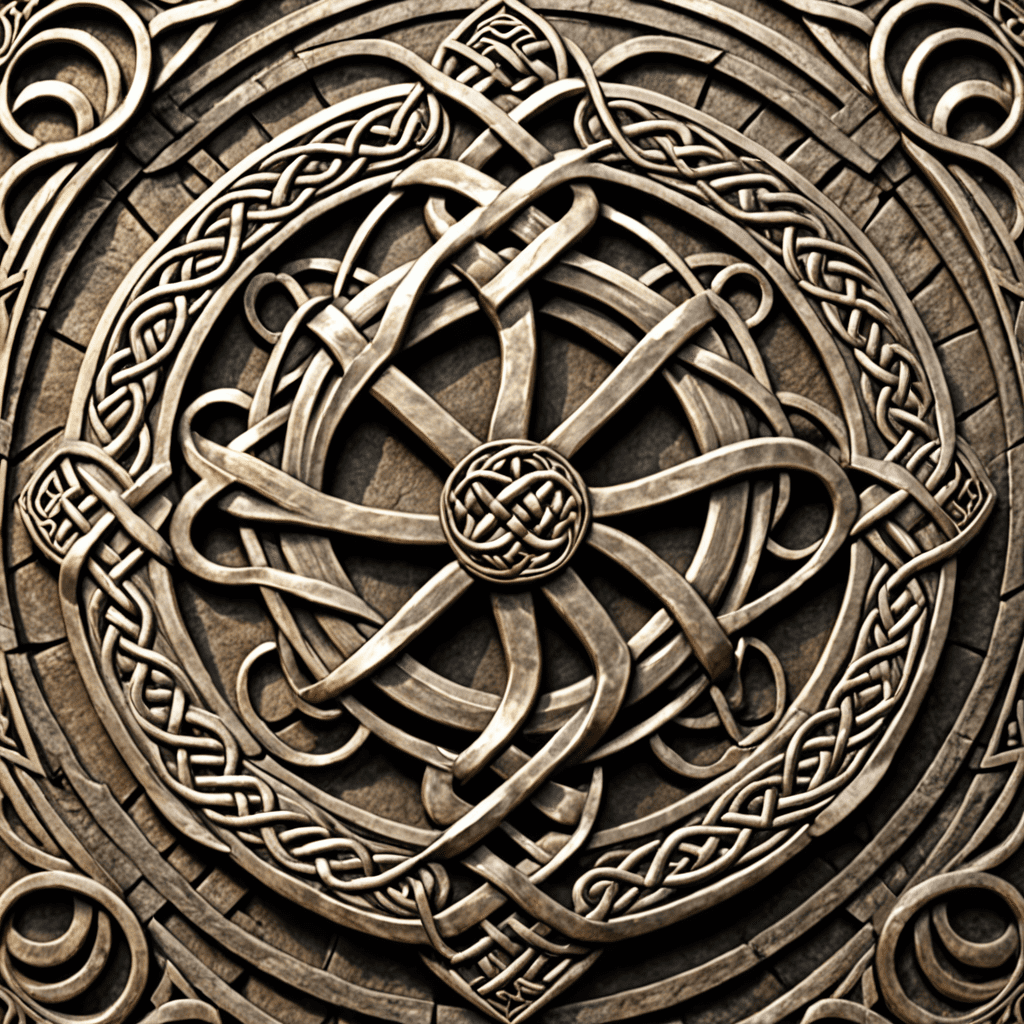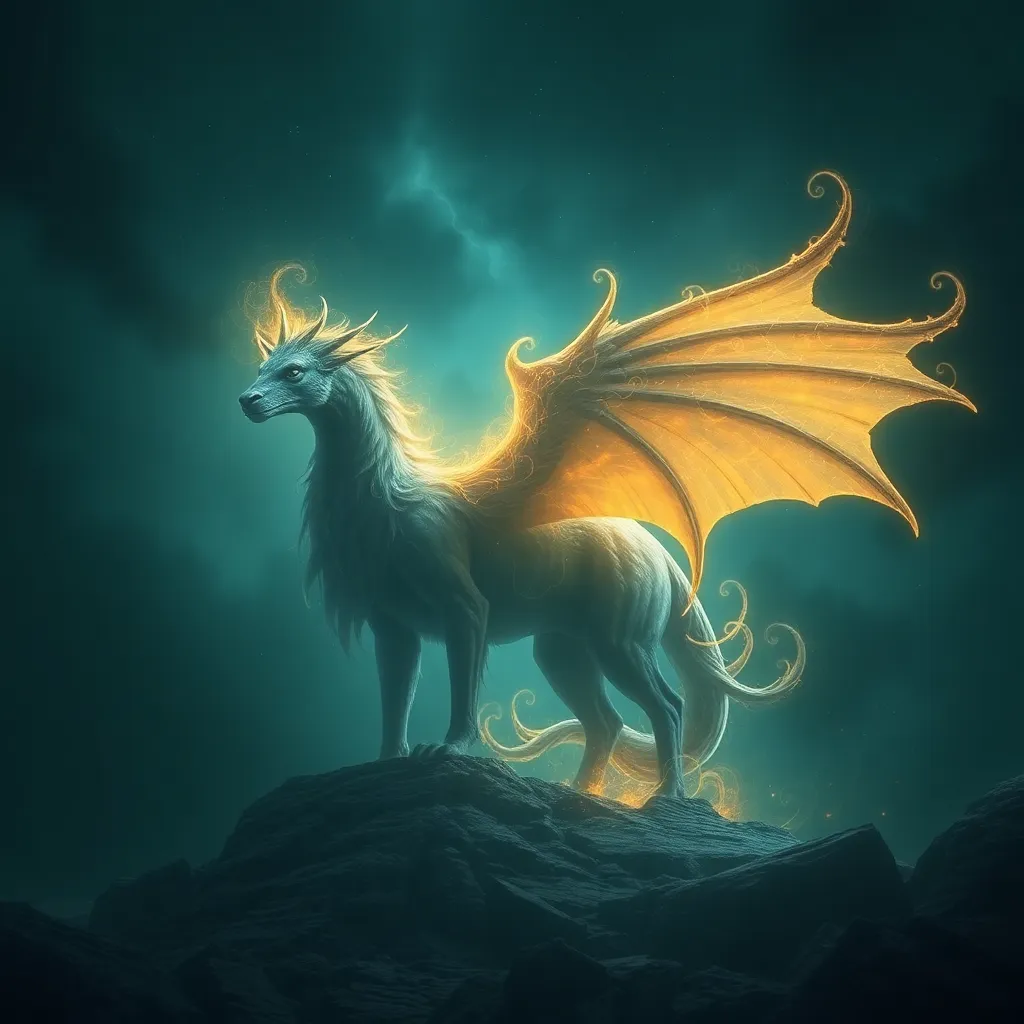The Serpent’s Shadow: Jörmungandr in Modern Fantasy and Science Fiction Literature
I. Introduction
Jörmungandr, often referred to as the Midgard Serpent, occupies a vital role in Norse mythology. As one of the three children of Loki and the giantess Angerboda, this colossal serpent encircles the Earth, symbolizing the boundary between chaos and order. Jörmungandr’s significance extends beyond mere mythology; it reflects a deep understanding of the natural world and humanity’s place within it.
The serpent’s presence in cultural narratives is profound, representing themes of destruction, duality, and the cyclical nature of life. In modern literature, Jörmungandr has influenced a myriad of authors and creators, inspiring new interpretations and adaptations that resonate with contemporary audiences. This article aims to explore Jörmungandr’s enduring legacy and its impact on modern fantasy and science fiction literature.
II. The Mythological Roots of Jörmungandr
Jörmungandr’s origins in Norse mythology paint a vivid picture of chaos and power. According to the myths, Odin threw Jörmungandr into the ocean, where it grew so large that it could encircle the Earth, grasping its own tail. This imagery is not only striking but deeply symbolic, representing the interconnectedness of all things.
Jörmungandr plays a pivotal role in the events of Ragnarök, the apocalypse in Norse mythology. During this cataclysmic battle, Jörmungandr emerges from the sea to confront Thor, leading to mutual destruction. This highlights the serpent’s embodiment of chaos and the inevitable cycle of life and death.
When comparing Jörmungandr to other mythological serpents, such as the biblical Leviathan or the Aztec Quetzalcoatl, we see similarities in their representation of chaos and the struggle between order and disorder. However, Jörmungandr’s unique attributes root it firmly in the Norse worldview, emphasizing the harsh realities of nature and fate.
III. Jörmungandr’s Evolution in Fantasy Literature
In contemporary fantasy literature, Jörmungandr has been reimagined in various forms, appearing as a character, a symbol, or an archetype. Authors draw upon the serpent’s mythological roots to create rich narratives that explore themes of power and destruction.
- Depictions in Contemporary Fantasy Novels: Jörmungandr has appeared in series such as Neil Gaiman’s “Norse Mythology,” where it is presented as a formidable creature intertwined with the fates of gods and men.
- Character Adaptations: In works like Rick Riordan’s “Magnus Chase” series, Jörmungandr takes on a more nuanced persona, often depicted as a tragic figure caught in a cycle of violence and prophecy.
These adaptations often highlight themes of duality, where Jörmungandr represents both destruction and the potential for rebirth. The tension between good and evil, creation and destruction, is a central theme in many fantasy settings influenced by this mythological figure.
IV. Jörmungandr in Science Fiction
Jörmungandr also finds a place in science fiction, where it is often used as a metaphor for technology and progress. As the world grapples with rapid advancements, the serpent symbolizes the dangers and unpredictability of such progress.
- Representation in Sci-Fi Narratives: In works like “The Dark Tower” series by Stephen King, Jörmungandr is invoked as a symbol of the cyclical nature of existence, reflecting the complexities of time and reality.
- Case Studies: The novel “The Peripheral” by William Gibson features serpentine motifs that echo Jörmungandr’s characteristics, emphasizing the intertwining of technology and fate.
Through these representations, Jörmungandr serves as a cautionary symbol, reminding us of the potential chaos that can arise from unchecked technological advancement.
V. Thematic Explorations of Jörmungandr’s Symbolism
The symbolism of Jörmungandr extends into several thematic explorations relevant to both fantasy and science fiction literature. These themes resonate with readers, providing deeper insights into the human condition.
- The Serpent as a Symbol of Fear: Jörmungandr embodies the unknown, evoking fear of what lies beneath the surface. This theme is prevalent in horror elements within fantasy literature.
- Environmental Themes: In modern narratives, Jörmungandr is often portrayed as a guardian of nature, emphasizing the importance of ecological balance and the consequences of human actions.
- Cyclical Nature of Destruction and Rebirth: The recurring theme of life, death, and rebirth, as represented by Jörmungandr’s role in Ragnarök, serves as a powerful motif in storytelling.
VI. Jörmungandr in Popular Media
Beyond literature, Jörmungandr has permeated popular media, influencing film, television, and video games. These adaptations often reinterpret the serpent’s mythos for new audiences.
- Film and Television: In series like “Vikings” and films such as “Thor,” Jörmungandr is depicted with varying degrees of fidelity to the original mythology, often emphasizing its monstrous qualities.
- Video Games: Games like “God of War” feature Jörmungandr as a significant character, integrating its lore into gameplay mechanics and narratives.
- Merchandise and Cultural Impact: Jörmungandr’s image has become iconic, appearing in various forms of merchandise, from collectibles to clothing, reflecting its cultural significance.
VII. Author Perspectives: Influences and Interpretations
Contemporary authors draw inspiration from Jörmungandr’s rich mythology, shaping their narratives through personal and cultural lenses. Insights from interviews reveal how these influences manifest in their work.
- Author Insights: Many authors express a fascination with Jörmungandr’s complex nature, viewing the serpent as a reflection of their own struggles with chaos and order.
- Cultural Backgrounds: The diverse backgrounds of authors inform their interpretations of Jörmungandr, leading to unique narratives that resonate with varied audiences.
- World-Building: Jörmungandr’s myth serves as a foundation for world-building, allowing authors to create intricate settings where the serpent’s influence is felt throughout the story.
VIII. Conclusion
In summary, Jörmungandr’s significance in modern literature is profound, influencing a variety of genres and narratives. As authors continue to explore the themes associated with this mythological serpent, we can expect to see innovative interpretations that reflect contemporary issues.
Looking ahead, future trends in the portrayal of mythological figures are likely to delve deeper into the complexities of human experience, using symbols like Jörmungandr to explore themes of chaos, destruction, and rebirth. Jörmungandr’s enduring legacy in storytelling serves as a reminder of the power of myth and its ability to shape our understanding of the world.




